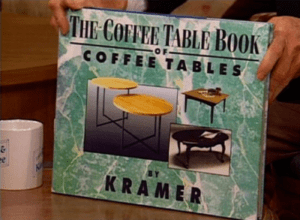What is Inbound Marketing?
Why not start easy and explain a relatively new, yet enormous, field of marketing? It’s always good to run before you can crawl. First, let’s admit that if there is Inbound Marketing, there must be Outbound Marketing. Outbound Marketing is almost all of the marketing that we think of, and was all marketing prior to about 2008. It looks like this:
Company A has a product, and they want us to buy it. So Company A invests in TV or Radio Commercials, newspaper ads, flyers, brochures, they call us during dinner, they leave flyers under our door. Outbound Marketing is typically 90% of the marketing budget for a business. Sometimes companies spend this during the Super Bowl. For the record, we’ve always been partial to Terry Tate, Office Linebacker. Outbound Marketing is high cost, low yield, and is a challenge when trying to track Return on Investment (ROI). While we love Terry Tate, according to Ad Adage Terry created buzz for Reebok, but wasn’t responsible for shoe sales. And a Super Bowl ad costs more than most companies’ gross revenue.

Which brings us back to Inbound Marketing. This approach changes the relationship between consumers and companies. The idea is that a business has an expertise and knowledge base that they can use to create content that is of interest to the prospective customer. If it occurred to you that this blog post about Inbound Marketing is an example of the very same marketing, you’re right! We know what you’re thinking…very Meta.
Inbound Marketing serves to address a question, concern or need for a prospective customer, and by doing, create credibility and trust as they progress through their buyer’s journey (we’ll talk about the buyer’s journey later).
Now, with a simple online search, we’ll learn that 93% of online experiences begin with a search engine, and that Google owns 68% of search engine market share. Further, over 6.5 Billion (BILLION!!!) searches take place daily, worldwide. This means that when someone goes online looking for information on your product, they’re trying to find information through a search engine. Creating relevant content that can be found by your prospective customer is Inbound Marketing. Making sure it can be found through Pay Per Click and Search Engine Optimization is Inbound Marketing. Posting and sharing on Social Media is Inbound Marketing. Anything that you put into the digital world to help your customer is probably…yes…Inbound Marketing.
And you care about this because a lead captured through Inbound efforts is already a warm lead. According to CRM Daily, nearly half of companies that implement inbound marketing efforts see a 25% greater ROI on those programs than companies that don’t. Further, Inbound channels can deliver up to 30X the campaign conversion rate of traditional outbound direct-mail campaigns.
Look at it this way, your audience is online. They spend 3 hours a day on mobile devices, and they perform more searches from mobile than from desktop as of 2016. Why not be where they are, helping to fill a need?
And if you aren’t sure where to start, don’t worry. We’re Inbound Marketing Certified by Hubspot, the company that literally coined the term, “Inbound Marketing.” We can help.





